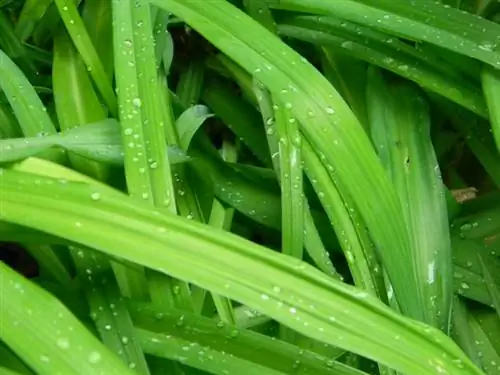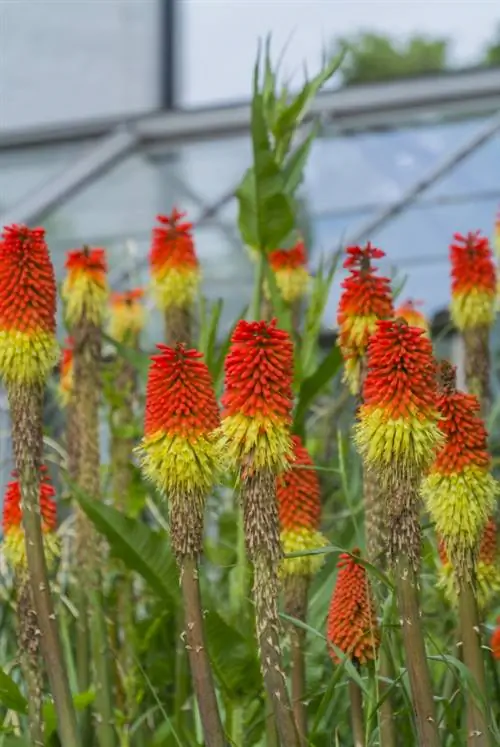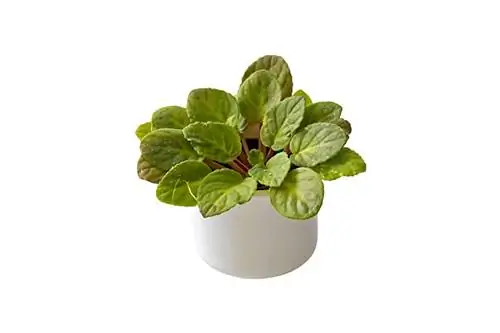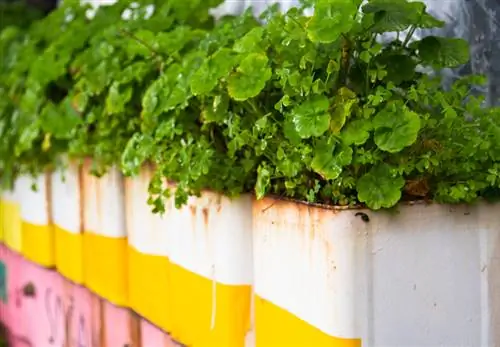- Author admin [email protected].
- Public 2023-12-16 16:46.
- Last modified 2025-06-01 06:02.
The leaf fans have developed fantastically. The joy of the flowers is great. But what now? Where are the flowers? Summer is almost over and the daylily is still not blooming. What reasons could lie behind this?
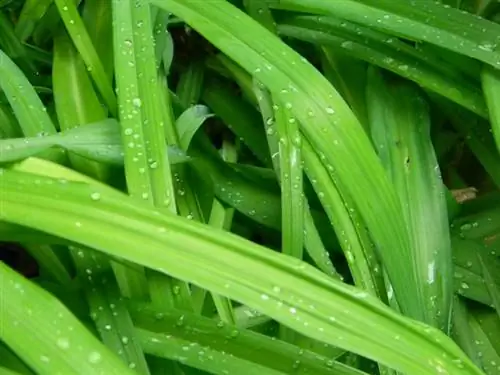
Why aren't my daylilies blooming?
Why don't daylilies bloom? Possible causes include a location that is too shady, lack of nutrients, pest infestation, old age, recent transplanting, late planting, dense planting, drought or late-flowering varieties in harsh locations. Adjusting the conditions can lead to flowering.
Various causes can be possible
It often happens that the daylily does not bloom in its first year. But some gardeners also complain about missing flowers in the second year or later. What could be the causes? The causes can be different. If you planted your daylily yourself and know it well, you should be able to figure out the cause quickly.
The most common causes of missing flowers
Here are the most common causes of daylilies not blooming:
- too shady location
- too few nutrients
- Pest infestation (daylily gall midge)
- old age of the perennial
- recent transplanting
- planting or sowing too late
- too dense planting
- prolonged drought
- late-flowering variety is in a rough location
Solving the problem - prevention and aftercare
In order to get a blooming daylily, the location and procedure when planting play a fundamental role. Daylilies need a sunny spot and should be planted in spring (sowing between March and April). A minimum distance of 40 cm from other plants is important when planting.
Daylilies should be supplied with fertilizer (€8.00 at Amazon) from their second year onwards by June at the latest. This is especially true if they were planted in very sandy soil (poor in nutrients). In addition, regular water supply is crucial until flowering. From the 3rd year onwards, it is recommended to rejuvenate or divide the plant.
If you notice thickened buds, take a close look at them. The daylily gall midge may have laid its eggs there. The newly hatched larvae eat the buds and the flower stops. The thickened buds should be removed and disposed of immediately.
Tips & Tricks
It's often little things why daylilies don't bloom. Don't throw in the towel, but be patient. Maybe it will take until August for the flowers to appear or the daylily will take its time until next summer?

